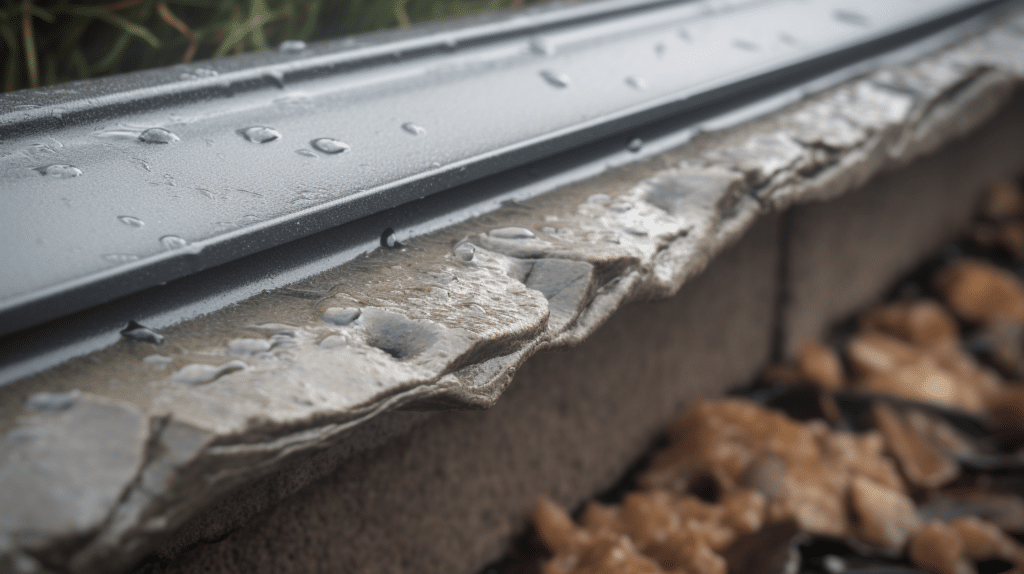Hailstorms can cause serious damage to your home, particularly to your roof.
But how do you know if your home has been affected by hail damage? It’s important to be able to recognize the signs so that you can take action and prevent further issues down the line.
In this article, we will discuss the telltale signs that suggest if your home needs a hail damage roof repair.
From dents and cracks to missing shingles, we’ll outline the key indicators that should prompt you to seek professional help. By being aware of these signs, you can ensure the safety and integrity of your home’s roof.
Don’t wait until a minor issue becomes a major problem.
With the right knowledge and proactive approach, you can address hail damage early on and save yourself from costly repairs in the future. So, let’s dive in and learn how to identify the signs that your home may need a hail-damaged roof repair.
1. Visible Dents or Bruises on Shingles
One of the most common signs of hail damage after a storm is visible dents or bruises on shingles.
Asphalt shingles are particularly vulnerable, often displaying pockmarks where hail has impacted. While more resilient, metal roofing can still bear the telltale dimples indicative of hail’s force. The type of roofing materials plays a significant role in the extent of these blemishes, but regardless of the material, such signs should never be ignored.
2. Granule Loss
Hail can severely compromise the protective granules on asphalt shingles, leaving them vulnerable to the elements.
When these granules are knocked loose, they often collect in gutters or at the bottom of downspouts. The absence of these granules exposes the shingle’s base material and diminishes its ability to protect your home. Regularly checking for loose granules can help identify hail damage early.
3. Damaged Metal Components
Metal roofs, though durable, are not impervious to roof damage from severe hail.
The impact can leave dents on metal flashings, valleys, and vents, potentially leading to compromised seals. If these dented components are overlooked, even a minor imperfection can escalate into a major leak.
Therefore, inspecting metal fixtures after a hail event is crucial for maintaining roof integrity.
4. Split or Fractured Shingles
Shingle damage from hail can manifest as split or fractured roof shingles—a clear signal that the roofing system’s integrity has been compromised.
These splits, which may appear as sharp lines or cracks, weaken the shingle’s ability to repel water and can drastically shorten its lifespan. Inspecting for such damage post-hailstorms is vital to prevent future roofing failures.
5. Water Leaks or Stains Inside the Home
After a hailstorm, discovering water leaks or stains on your interior ceilings and walls can be a distressing sign that your roof has sustained damage.
These watermarks are often the most tangible evidence of a compromised roofing system, indicating that moisture has breached the outer layer and is seeping into your home. Prompt attention to these symptoms is essential to prevent further deterioration and potential structural issues.
6. Loose or Missing Shingles
Damage to roof shingles from hail can result in them becoming loose or going missing entirely, which is a serious concern for homeowners.
Cracked shingles, in particular, can dislodge due to the storm’s force, exposing the roof deck to the elements. This compromises the roof’s protective function and increases the risk of water infiltration and subsequent damage to the interior of the home.
7. Damaged Siding or Gutters
Hailstorms can cause more than roof troubles; they often leave dents in gutters, damage gutter screens, and create chips on gutter surfaces.
Such indicators reveal the storm’s intensity and might point to additional unseen roof damage. It is imperative to assess these areas, as compromised gutters can affect water drainage and lead to further structural issues in your home.

8. Wear on Roofing Accessories
Roofing accessories may not be the first place you look, but they can show obvious signs of hail impact, such as chips in roof vents, skylights, and chimney covers.
These smaller, more detailed areas are susceptible to damage and can reveal the subtler effects of hail, offering clues about the overall health of your roofing system. Inspecting them should be part of any thorough post-storm assessment.
9. Neighbor’s Roofs are Damaged
If you notice damage on your neighbour’s roofs, it’s a strong signal to arrange a roof inspection for your own home.
Hail does not discriminate, and the likelihood that your roof escaped unscathed is slim. A complete inspection by professionals can unveil hidden issues, ensuring proper repairs are made to maintain your roof’s integrity and prevent future problems.
10. Hail Size and Storm Intensity
The hailstones’ size and the hail storm’s intensity are critical factors in assessing potential hail storm damage.
Generally, the larger the hail, the greater the severity of hail damage to your roof. It’s vital to understand that even smaller hailstones can cause substantial damage in a particularly intense storm, so always consider these elements when evaluating your roof’s condition after such an event.
Conclusion
If you notice any of these signs of hail damage on your roof, it’s important to take action and get a repair as soon as possible. Ignoring the damage can lead to more serious issues down the line and potentially cost you more money in the long run. Don’t let a small problem turn into a major headache. Protect your home and your investment by addressing hail damage promptly. Your roof will thank you!

